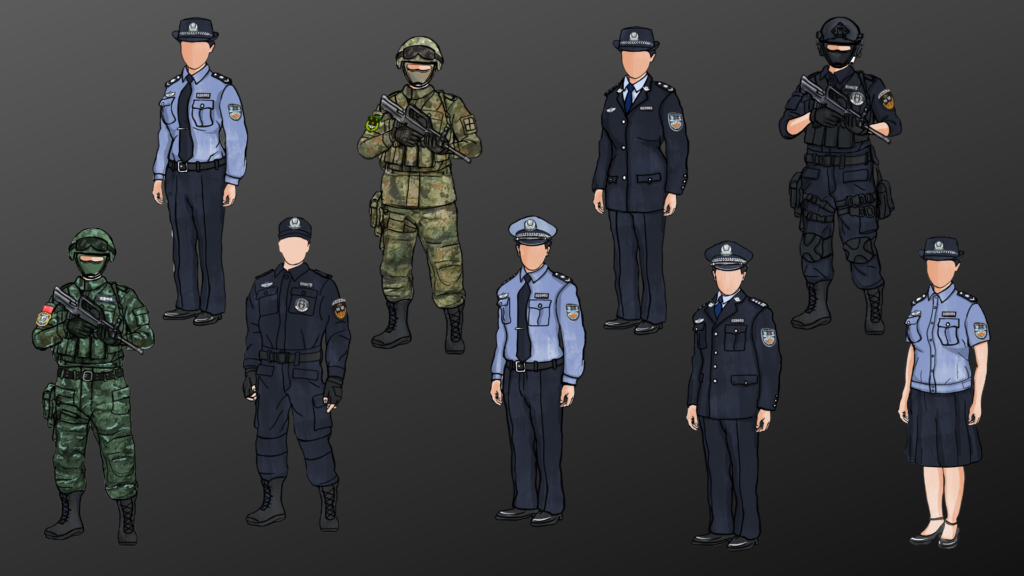New UHRP Explainer Maps Police and Security Forces in the Uyghur Region

December 13, 2023 | 7:00 a.m. EST
For Immediate Release
Contact: Omer Kanat +1 (202) 790-1795, Peter Irwin +1 (646) 906-7722
New research from the Uyghur Human Rights Project (UHRP) maps Chinese state policing structures in East Turkistan, building a fuller picture of responsibility for ongoing atrocities. The Explainer, Policing East Turkistan: Mapping Police and Security Forces in the Uyghur Region, describes the role played by various police forces in implementing policies that amount to atrocity crimes.
“This explainer is a critical step in accurately identifying perpetrators,” said UHRP Executive Director Omer Kanat. “By identifying how Uyghurs are policed and controlled, the human rights community is better equipped to seek justice and remediation.”
In order to build a fuller picture of the systematic human rights atrocities perpetrated against Uyghurs, it is necessary to understand the institutions of policing. While the “police” can be understood to be under the strict control of the Chinese Communist Party, Policing East Turkistan aims to distinguish the various forms of police in East Turkistan, their roles, as well as their chains of command.
East Turkistan has been described as “one of the most heavily policed regions in the world.” A 2017 estimate found more than twice as many People’s Police and other “security-related positions” in East Turkistan than elsewhere in China. This does not include, however, the unknown number of centrally commanded People’s Armed Police or Xinjiang Production and Construction Corps (XPCC) police and paramilitary forces.
According to official statistics, despite East Turkistan’s population constituting only 1.5 percent of China, 20 percent of all police arrests in 2017 were in East Turkistan.
Key takeaways from Policing East Turkistan: Mapping Police and Security Forces in the Uyghur Region:
- The police in East Turkistan are among the prime actors in carrying out the genocide arising from the Chinese Communist Party’s (CCP) policies. Policing in East Turkistan is carried out by several agencies with differing duties and separate command structures, some at the local level and some at the national level, but all ultimately under the CCP’s strict control.
- One of these agencies, the People’s Armed Police (PAP), is commanded by the same CCP committee that controls China’s armed forces, although the PAP is not part of the military.
- East Turkistan has more PAP “Mobile Detachments,” similar to an army regiment, than anywhere else in the People’s Republic of China, possibly twice as many as even Beijing despite having a fraction of Beijing’s population, and they are commanded at the same level as Beijing’s PAP – a grade higher than any other provincial-level administration.
- Regional police, and elsewhere in the PRC, are highly adept and specifically coordinated to tackle perceived affronts to the CCP’s authority, but do not perform well in addressing common crime (such as drug crime).
- According to estimates, there are more than twice as many People’s Police, organizationally similar to state police forces in the US, in East Turkistan than elsewhere in the PRC, plus up to 70,000 Assistant Police (short-term, lesser-trained supplementary officers), on top of an unknown number of PAP troops.
